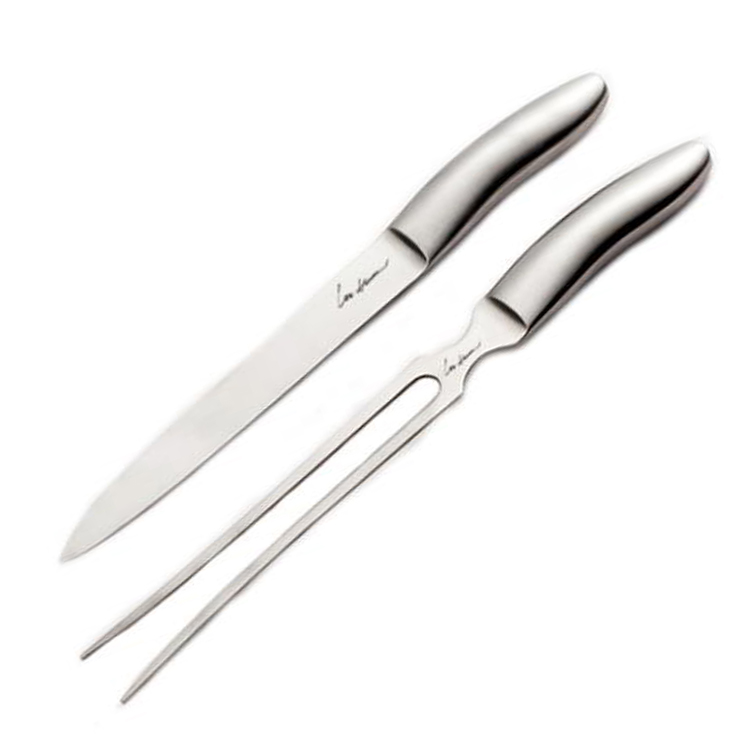Views: 290 Author: Site Editor Publish Time: 2025-11-04 Origin: Site











Content Menu
>> The Importance of a Sharp Knife
● Methods to Test Knife Sharpness
>> Safe Storage
A sharp knife is essential for several reasons:
- Safety: Dull knives require more force to cut, increasing the risk of slips and accidents.
- Efficiency: A sharp knife cuts through food with ease, saving time and effort in the kitchen.
- Quality of Cuts: Sharp knives produce cleaner cuts, which is especially important for presentation in dishes.
One of the simplest ways to assess the sharpness of your knife is through visual inspection. Look closely at the blade under good lighting to check for any nicks, chips, or dull spots. A well-maintained blade should have a smooth edge without any visible imperfections.
The paper test is a popular method for checking sharpness. To perform this test:
1. Hold a piece of paper vertically.
2. Position the knife at a 45-degree angle to the paper.
3. Slice through the paper from the heel to the tip of the blade.
A sharp knife will cut through the paper cleanly, while a dull knife will struggle or tear the paper.
Tomatoes are often used as a benchmark for knife sharpness. To test your knife:
1. Hold a ripe tomato on a cutting board.
2. Attempt to slice through the skin with minimal pressure.
If the knife glides through the skin easily, it is sharp. If you have to apply significant pressure, it may need sharpening.
The thumb test involves carefully running your thumb across the edge of the blade. Here's how to do it safely:
1. Place your thumb perpendicular to the blade.
2. Gently slide your thumb across the edge.
If the knife feels sharp and slightly "grabs" your thumb, it is sharp. If it feels smooth and slippery, it may be dull.
This test is similar to the thumb test but uses your fingernail instead. To perform the fingernail test:
1. Hold the knife at a slight angle against your fingernail.
2. Apply light pressure.
If the knife catches on your nail, it is sharp. If it slides off without catching, it may need sharpening.
For those comfortable with it, the shaving test can be a definitive way to check sharpness. To perform this test:
1. Hold the knife at a shallow angle against your arm.
2. Gently run the blade along your skin.
If the knife removes hair easily, it is sharp. However, this test should be done with caution to avoid injury.
To keep your knife in top condition, sharpen it regularly. Depending on usage, this could be every few weeks or after several uses. Using a whetstone or a professional sharpener can help maintain the edge.
Always clean your knife after use. Hand wash it with warm, soapy water and dry it immediately to prevent rust. Avoid putting knives in the dishwasher, as this can dull the blade.
Store your knife in a knife block, magnetic strip, or protective sheath to prevent damage to the blade and ensure safety.
- Using the Wrong Sharpener: Ensure you use the appropriate sharpener for your knife type.
- Neglecting Maintenance: Regular honing and proper cleaning are essential for maintaining a sharp edge.
- Over-Sharpening: Excessive sharpening can wear down the blade faster than necessary.
Knowing how to test the sharpness of your knife is essential for effective cooking. By using methods such as the paper test, thumb test, and fingernail test, you can easily determine whether your knife is sharp enough. Regular maintenance, including sharpening and proper cleaning, will ensure that your knives remain in excellent condition, making your cooking experience safer and more enjoyable.

1. How often should I sharpen my knife?
- It depends on usage, but sharpening every few weeks or after several uses is a good practice.
2. What is the best method to sharpen a knife?
- Using a whetstone or a professional sharpener is recommended for the best results.
3. How do I know if my knife is sharp enough?
- You can use tests like the paper test, thumb test, or fingernail test to assess sharpness.
4. Can I use a kitchen knife sharpener for my carving knife?
- It is generally better to use a specialized sharpener for carving knives to maintain the correct angle.
5. What should I do if my knife is dull?
- Sharpen it using an appropriate sharpener and follow up with honing to maintain the edge.
This article provides a comprehensive guide on how to determine if a knife is sharp enough, detailing various testing methods such as the paper test, thumb test, and fingernail test. It emphasizes the importance of maintaining sharp knives for safety and efficiency in cooking. Additionally, it offers maintenance tips and answers common questions related to knife sharpness.